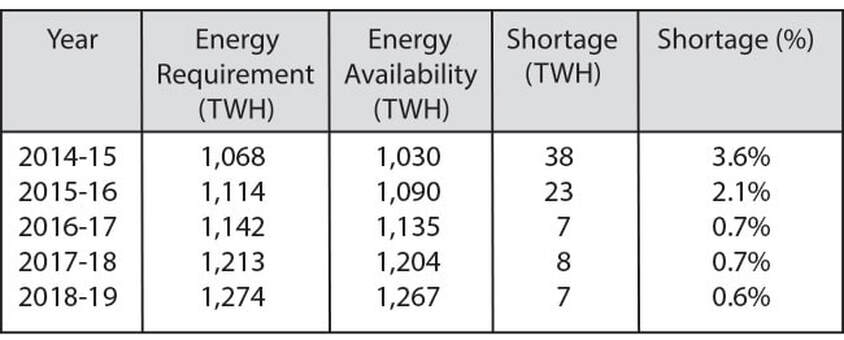|
In India, inefficiencies in the national power sector may be costing the nation 4% of GDP per year according to a new World Bank report.* Instead, with the right investment, universal connection to grid power could increase the income of rural households by $9.4 billion a year; and, eliminating power shortages may prevent an estimated $22.7 billion in business losses annually.* According to the report, 178 million people still lacked access to grid-delivered electricity in 2017; and, many suffered from frequent power cuts, dragging down economic production. These present realities stand in the context of forecasts by which India may well triple its electricity demand over the next 20 years. Still, India has not been idle regarding this sector. India’s electricity system has seen rapid growth in both supply and demand, over the last 5 years. In fact, over 130 million people have been connected since 2013, the result of new generation construction, and significant investment in both transmission and distribution.* Despite progress, both capacity and energy remain at deficit levels, though the deficits are shrinking. The Table shows India’s capacity and energy demand and supply, deficits and shortages during the past 5 years. Figures are from India’s Ministry of Power Annual Report.** India's national energy supply, demand and deficits (in million units, TWH) Inefficiencies are found all along the power sector value chain. India’s electricity system is predominantly coal-based; the nation has the fourth largest coal reserves in the world. Despite the availability of fuel, India fails to meet demand (by 14% in 2016 according to the report) because of a lack of competition and inefficient mining methods. Only 10% of underground coal mines are mechanized, and the average output per labor shift is less than one twenty-fifth of that in the U.S. Further, the inefficient and over-use of coal is causing significant negative health effects on the population. Subsidies and inefficient generation, transmission, and distribution also play a role in shortages (75% of India’s generation capacity if from coal). Losses in transmission and distribution exceed 20% - a much higher rate than elsewhere in the world.
Recommendations of the report go beyond the simple liberalization of energy prices; without solving other issues, prices would merely reflect all inefficiencies and be unreasonably high. Instead reforms should prioritize efficient coal allocation and delivery, promote competition in both fuel and electricity supply, and then allow electricity prices to reflect the true cost of supply. In this way the right incentives will be present to promote investment. Social assistance can then be targeted to help those in need to cope with higher prices. To see the report, click here. To watch a short video about India’s power sector, click here. * Zhang, F. “In the Dark; how much to power sector distortions cost South Asia?” World Bank, 2019, Washington DC. ** India’s Ministry of Power, 2018-2019 Annual Report, 2019, p. 18-19.
0 Comments
|
Richard Swanson, Ph.D.Asset valuation and project finance expert, specializing in financial and economic analysis of civil infrastructure assets. Archives
June 2022
Categories |


 RSS Feed
RSS Feed
